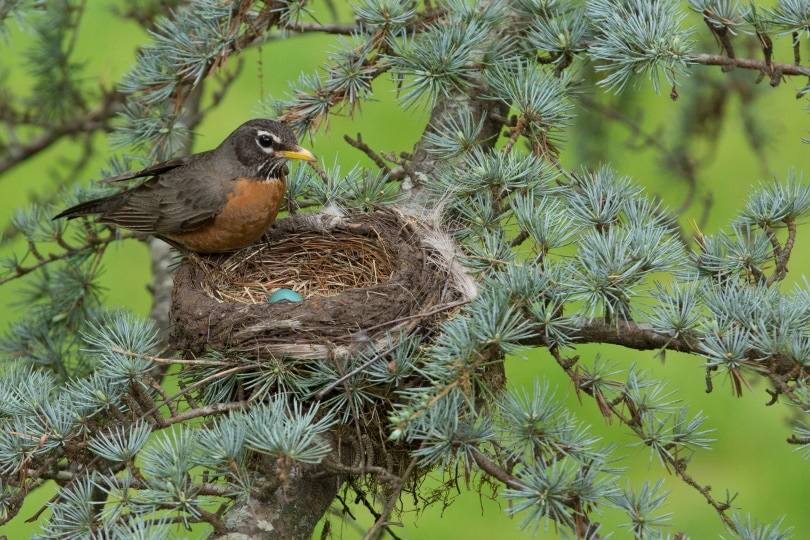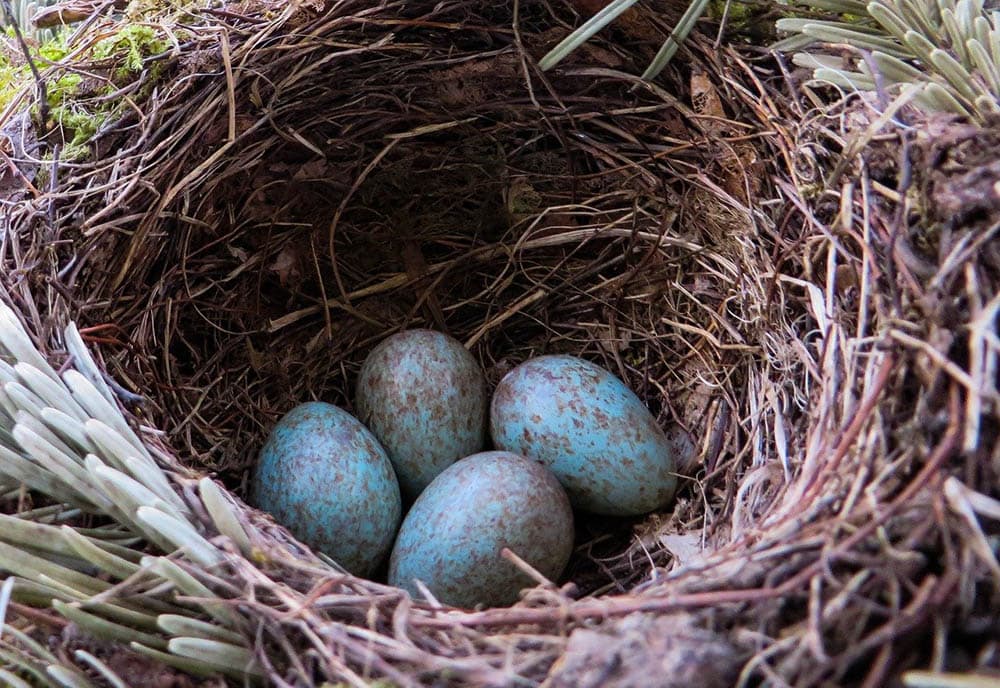How Often Do Birds Lay Eggs? What You Need To Know!
Last Updated on

Reproduction can be difficult for many female animals. It’s one of the most stressful and physically demanding processes that any animal can endure, whether talking about a human, a wolf, or a bird. But, regardless of the species, the purpose of reproduction is to pass your DNA to the next generation.
Avian reproduction is unique in that birds may lay anywhere from one to 10 or more eggs. However, most only produce one egg a day. Evolution, morphology, health, and husbandry all play a role in how often a bird lays eggs. Understanding avian biology and reproduction will help you understand why reproduction differs so radically from mammals

The Basics of Laying Eggs
Two patterns of egg laying exist in birds: determinate and indeterminate. Determinate describes a pattern where they will lay a set number no matter the circumstances. Indeterminate layers, such as many duck species, will often have a second clutch if something happens to the first one. Predation is often responsible, but other things can affect the offspring’s survival.
Hormonal changes trigger egg-laying behavior. The developing egg travels down to the female’s ovary. The processes of albumen and shell formation continue even if the eggs aren’t fertilized—that’s why chicken farmers can gather eggs without a rooster present. It takes about 26 hours for a bird to lay an egg. This is mostly relevant for domesticated birds. It’s a different story when talking about wild bird species.

Wild vs. Domestic Bird Egg Production
Evolution and climate are the driving factors of egg production in wild birds. It’s worth noting that modern avian species have only one ovary versus the two that mammals have. Wild birds use environmental factors to influence egg-laying behavior and balance the other energy-expensive tasks they perform like migration, molting, and predator avoidance. All these things require lots of energy and resources. Therefore, wild species have a set annual schedule of wintering, spring migration, breeding, molting, and fall migration so they can dedicate energy to each one.
Seasonal changes and the length of daylight determine when egg laying happens. Therefore, the seasonal events are often quite predictable. This doesn’t always apply with domestic bird production, especially with chickens. Instead, humans are the wild card that affects many of the factors that influence when and how often birds lay eggs.

Other Factors Affecting Egg Production
Many things can shape the timing of when birds lay eggs. This includes things such as the cage environment, stress, and nutrition. However, you’ll often see other symptoms before you notice any changes, such as feather loss and poor body condition.
Remember that any organism will prioritize survival over reproduction, whether it’s a plant or an animal. If the conditions aren’t right, that’s when an organism will redirect its precious resources. Reproduction would only increase an animal’s risk of dying before fulfilling its life purpose.
The most controllable factor with domesticated poultry is the number of daylight hours. A range between 13–16 hours of light per day will steadily keep chickens laying eggs. Some research suggests that the optimal schedule is an optimal lighting schedule for egg production. Other things that might affect this include:
- Traffic
- Cage conditions
- Stress
- Noise
- Temperament


Conclusion
Biology dictates that most birds will only lay one egg per day. However, as you’ve seen, other things can influence the frequency, most often with a reduction instead of an increase in production. Wild birds have set seasons that are determined by environmental factors. It’s different from domesticated species that have a life where they don’t usually have to fight for survival and have a set schedule to follow.
Featured Image Credit: Anthony Ricci, Shutterstock
About the Author Chris Dinesen Rogers
Chris has been writing since 2009 on a variety of topics. Her motto with all of her writing is “science-based writing nurtured by education and critical thinking.” Chris specializes in science topics and has a special love for health and environmental topics, and animals of all shapes and sizes.
Related Articles:
How to Collimate Binoculars: 9 Expert Tips
How to Clean a Refractor Telescope: Step-by-Step Guide
How to Clean a Telescope Eyepiece: Step-by-Step Guide
How to Clean a Rifle Scope: 8 Expert Tips
Can You Use Binoculars to Look At Stars? How to Choose the Right Pair
How to Choose Binoculars for Bird Watching: 10 Expert Tips
10 Types of Hummingbirds in Arkansas (With Pictures)
8 Types of Hummingbirds in Nebraska (With Pictures)
